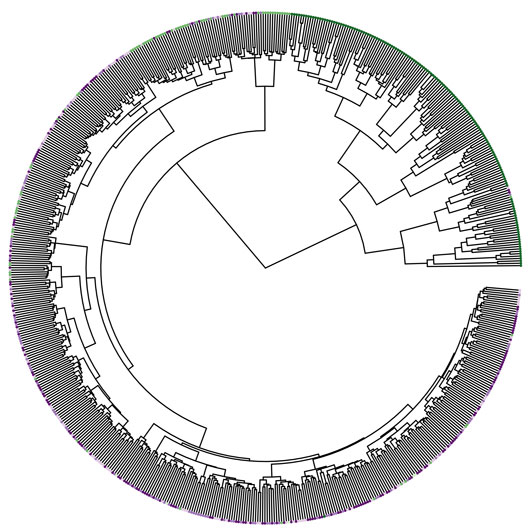Most measurable features of organisms vary between individuals, population and species. Outlining the complex genetic architecture of this variation -- i.e., the number of genes that vary, how many traits each gene affects, the dependence of each gene’s effects on other genes (epistasis) and on the environment -- has for a long time been fundamental to predict disease risk and agricultural production, and to parameterize models of phenotypic evolution in nature.
The nematode C. elegans has been a great model for functional biology, and its merits for studying natural history, quantitative genetics and evolutionary biology have more recently been appreciated. Yet, the research community has been missing a genetic mapping panel that faithfully represents natural variation, and that allows dissection of single genes. Using hybridization among natural C. elegans isolates together with experimental evolution at large population sizes, we developed such a genetic mapping panel and used it to characterize the genetic architecture of two aspects of fitness, fertility and body size.

Figure: Genomic similarity among the Caenorhabdtis elegans multiparent experimental evolution (CeMEE) recombinant inbred lines (RILs) and wild isolates. Terminal colors on the tree identify sub-populations of the CeMEE.
With simulations we show that the new mapping panel can dissect genes explaining as little as 5% of trait variation to single genes, a resolution unprecedented for metazoans. When employing genome-wide association analysis and other quantitative genetic methods, we find that both fertility and body size variance depend on a large number of genes and that, more significantly, there is widespread epistasis between alleles. This is a discovery confirming theoretical arguments regarding the genetic architecture of fitness components and their evolution under natural selection. Our results also show that the “missing heritability” phenomenon in quantitative genetics (including human genetics) can, at least in some cases, be explained by polygenicity and epistasis, but suggest that cataloging the genes responsible for variation in fitness-proximal complex traits is an impossible endeavor. Instead, agricultural and complex trait evolution models should continue to best predict individual values and trait evolution in nature.
HFSP financial support has been fundamental in the derivation of this new genetic mapping panel, which involved the active collaboration between the B. Shraiman, H. Teotónio, and M. Rockman labs (including lead author Luke Noble) to describe the genotypes in the panel, measure fertility and body size, and statistically model their genetic architecture, respectively. Our genetic mapping panel and methods are crucial groundwork for finding new genes and pathways of large effects and to test hypotheses about the evolution of sexual reproduction and recombination modifiers, for example, topics that are currently being researched in a collaborative fashion by us. HFSP support and this study in particular has also led to new collaborations and novel applications of this mapping resource.
Reference
Polygenicity and Epistasis Underlie Fitness-Proximal Traits in the Caenorhabditis elegans Multiparental Experimental Evolution (CeMEE) Panel. Noble LM, Chelo I, Guzella T, Afonso B, Riccardi DD, Ammerman P, Dayarian A, Carvalho S, Crist A, Pino-Querido A, Shraiman B, Rockman MV, Teotónio H. Genetics. 2017 Dec;207(4):1663-1685. doi: 10.1534/genetics.117.300406.


































